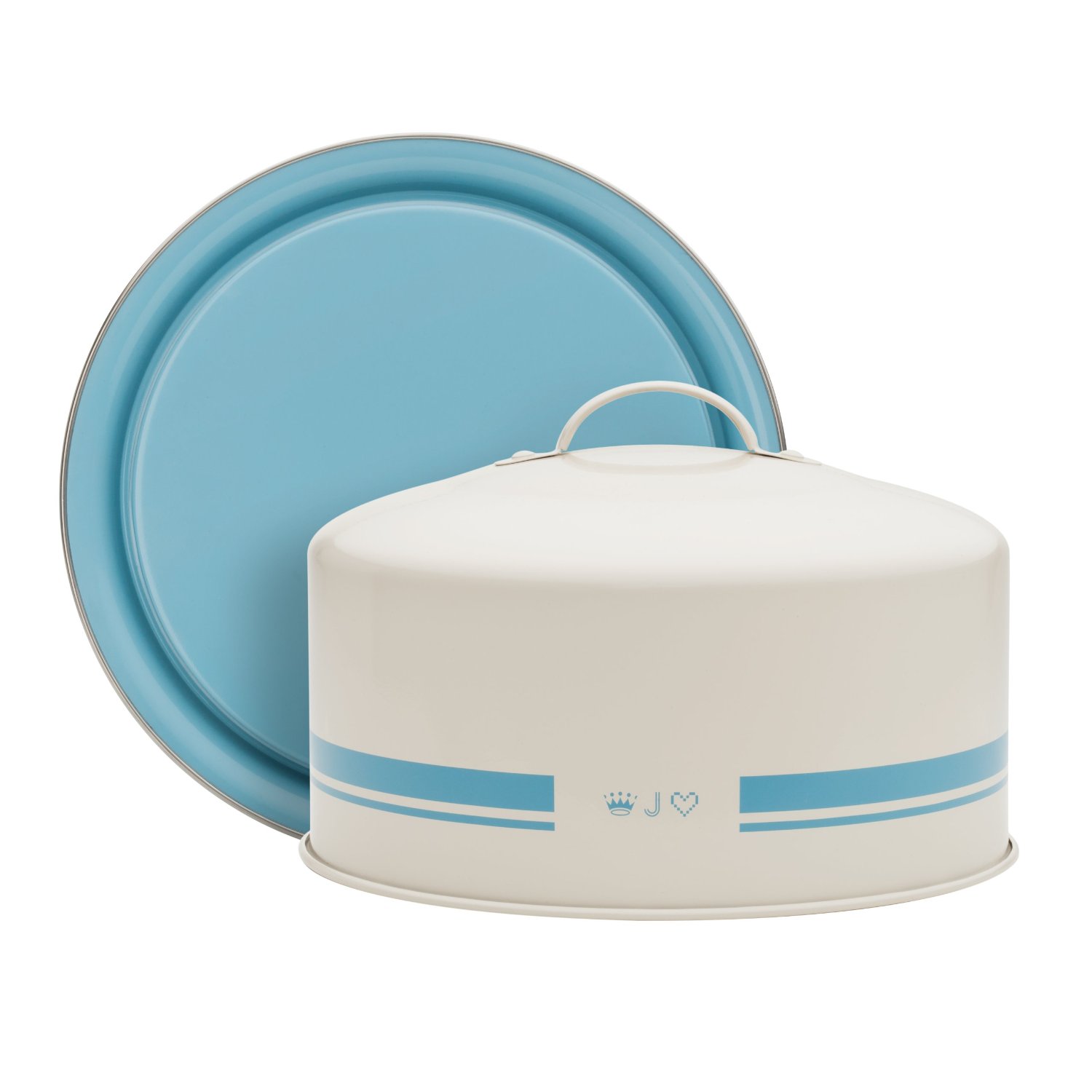Products |
Jamie Oliver: The Cake Tin & more
By
Published: Feb 22, 2017
Category:
Food and Wine
I fell in love with Jamie Oliver, and it started with a 6.5” by 11.5” cake tin.
We were invited to a party.
My wife, a master baker, volunteered to bring a cake.
I don’t understand the process, but this required a purchase: Jamie Oliver’s retro-chic sky blue and cream cake tin.
“Open it,” my wife said.
I couldn’t.
She held the top, pushed down on the bottom, and it opened. What held it closed? A silicon rim, which sealed it so tight you can carry the cake from the handle on top. And that rim, not coincidentally, keeps the cake fresh for days and days. [To buy the Jamie Oliver cake tin/carrier from Amazon, click here.]
The cake tin is, I fear, only the first of Jamie Oliver’s products to become necessities in our kitchen. There’s also a tin bread box with a cutting board on the cover. [To buy the bread box from Amazon, click here.] And coffee, tea and sugar canisters, also with silicone seals. [To buy the canisters from Amazon, click here.]
This stuff is so pretty, so smartly understated, that I wanted to know more about Jamie Oliver.
And that’s where the bromance caught fire.
Born in 1975, he went to work early in his parents’ pub. He was still a kid when he was hired as a sous chef at London’s River Café. [The River Café cookbook is a gem.] In 1997, he appeared in a documentary about the restaurant, and he was launched — he was majorly cute, had a big personality, and knew his stuff. His own BBC show, “The Naked Chef,” followed. He cooked for Tony Blair. His cookbook was a bestseller. He became the face of a supermarket chain. And every restaurant he opened was a hit. Soon he made the list of 30 Richest Brits Under 30.
In 2010, Oliver took off his apron and put on his combat boots. His enemy: the sugar-fat-and-chemical-filled prepared foods that have turned obesity into the planet’s leading disease. In 2010, he launched a TV series, “Jamie Oliver’s Food Revolution.”
After Huntington, West Virginia, he moved on to Los Angeles, where he encountered more resistance — he was soon barred from filming in public schools. That hasn’t slowed him down in the least. If you watch this, you may want to add him to your personal pantheon.


